Introduction to Beef Loin Flat Iron Steak
What is Beef Loin Flat Iron Steak?
The beef loin flat iron steak is a premium cut derived from the shoulder (chuck) of the cow. Known for its exceptional tenderness and rich marbling, it rivals pricier options like filet mignon. This steak is expertly trimmed to remove tough connective tissue, resulting in a uniform texture and juicy flavor. The distinctive beef loin flat iron steak label provides key insights into the cut, such as its origin, USDA grading, and marbling details. Labels also highlight freshness indicators like packaging dates, ensuring optimal quality. Praised for its versatility, this steak shines in grilling, pan-searing, and other preparation methods. The beef loin flat iron steak label is a guide to selecting a cut that guarantees culinary satisfaction.
Why Beef Loin Flat Iron Steak is Popular
The popularity of flat iron steak has surged in recent years due to its affordability and versatility. It delivers a comparable texture and taste to more expensive cuts, such as ribeye or filet mignon, making it a favorite for home cooks and chefs alike. Its ability to absorb marinades and cook evenly ensures it shines in dishes ranging from casual grills to gourmet presentations.
Table of Contents
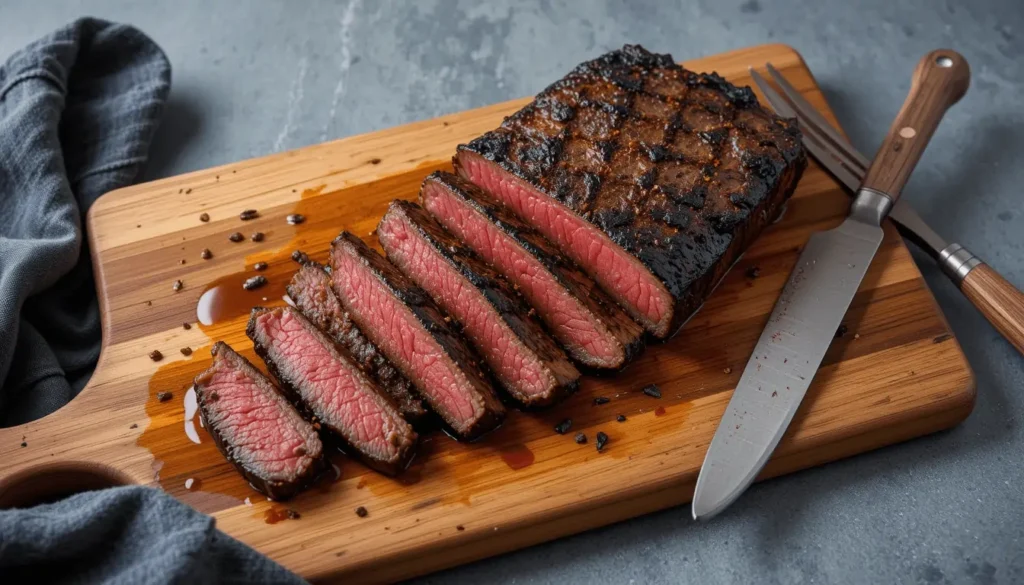
Understanding Beef Loin Flat Iron Steak Labels
Key Information on a Beef Loin Flat Iron Steak Label
The beef loin flat iron steak label holds essential details for discerning consumers. It typically includes the cut’s USDA grading, indicating quality and marbling levels for optimal flavor and tenderness. The label also specifies packaging and expiration dates, ensuring freshness and safety. Key descriptors, such as weight and thickness, guide portioning and cooking methods. Additionally, the beef loin flat iron steak label may highlight sourcing information, such as whether the beef is organic or grass-fed, offering insight into the steak’s origin and quality.
Decoding USDA Grading and Marbling
USDA grading ranks beef based on marbling (intramuscular fat) and overall quality. Prime grade, with the highest marbling, is ideal for tenderness and flavor, while Choice and Select are more budget-friendly but still offer excellent quality. Marbling contributes to juiciness and a buttery texture.
What Does the Expiration Date Tell You?
The expiration date on the beef loin flat iron steak label is a critical indicator of freshness and safety. It signifies the last day the product is at peak quality, ensuring optimal flavor and texture. Beyond this date, the risk of spoilage increases, even if the steak appears fine. A clear beef loin flat iron steak label with an accurate expiration date helps consumers make informed decisions, reducing food waste while maintaining the highest standards for culinary preparation.
How to Read a Beef Loin Flat Iron Steak Label Like an Expert
Recognizing Quality Indicators
Key indicators of quality include bright red coloration, fine marbling, and minimal liquid in the packaging. Labels with designations like “Certified Angus Beef” or “USDA Prime” highlight superior quality.
Identifying Cuts and Characteristics
The beef loin flat iron steak label offers vital clues for identifying cuts and characteristics. This versatile steak is known for its even thickness, deep marbling, and remarkable tenderness. Labels provide details such as the cut’s origin, ensuring authenticity and quality. The beef loin flat iron steak label may also highlight unique traits like fat content, enhancing flavor profiles. By understanding these indicators, consumers can select a steak that meets their culinary expectations with confidence and precision.
What Makes a Beef Loin Flat Iron Steak Special?
The Origins and Tenderness of Flat Iron Steak
Flat iron steak’s origins lie in innovative butchery techniques that maximize tenderness. It’s second only to filet mignon in softness, making it a prized cut for steak enthusiasts.
Flavor Profiles of Beef Loin Flat Iron Steak
The flat iron steak delivers a robust, beefy flavor. Its fine marbling enhances the taste, while its even thickness ensures consistent cooking.
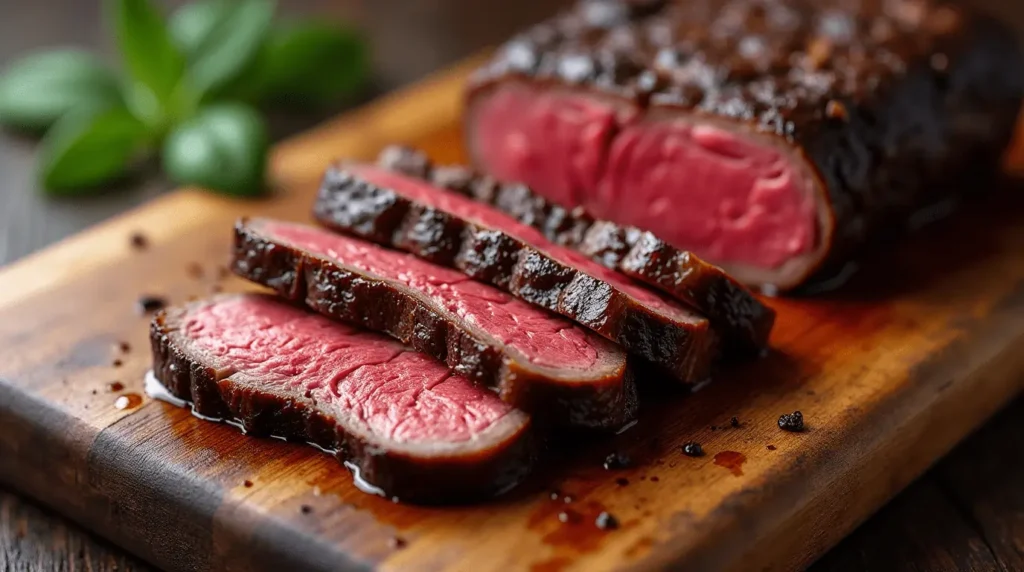
Ingredients Needed for Beef Loin Flat Iron Steak Preparation
Key Ingredients for Basic Seasoning
- Beef loin flat iron steak
- Kosher salt
- Freshly ground black pepper
Optional Ingredients for Enhanced Flavor
- Olive oil or butter
- Minced garlic
- Fresh herbs like rosemary and thyme
- Red wine or balsamic vinegar for marinade
What’s Inside the Label? Understanding Beef Loin Flat Iron Steak Terms
What is Marbling and Why Does It Matter?
Marbling refers to streaks of fat within the meat. It’s a hallmark of quality that enhances flavor, juiciness, and tenderness when cooked.
Exploring Certified Angus Beef Labels
Certified Angus Beef labels guarantee superior marbling, consistent quality, and exceptional taste. This designation ensures a premium experience for consumers.
The Importance of Sourcing Information
Labels indicating grass-fed or sustainably raised beef highlight ethical farming practices. These details inform consumers about the steak’s journey from farm to table.
Tips for Choosing and Preparing Beef Loin Flat Iron Steak
Expert Tips for Selecting the Best Cut
Choose steaks with uniform marbling and avoid cuts with excessive liquid or dull coloration. Select packaging with clear, comprehensive labeling for confidence in your choice.
Tips for Preparing Steak for Cooking
Preparing steak for cooking requires attention to detail and technique. Begin by examining the beef loin flat iron steak label for freshness and marbling, which influence flavor and texture. Allow the steak to reach room temperature before cooking to ensure even heat distribution. Pat it dry to promote a perfect sear. Season generously with salt and pepper or your preferred rub. The beef loin flat iron steak label often includes helpful preparation tips, enhancing your culinary results with precision and care.
Best Cooking Methods for Beef Loin Flat Iron Steak
Grilling the Perfect Beef Loin Flat Iron Steak
Heat your grill to medium-high. Cook the steak for 4-5 minutes per side for medium-rare, using a meat thermometer to ensure precision.
Pan-Searing vs. Grilling: Which is Better?
Pan-searing produces a flavorful crust, ideal for smaller kitchens or cold weather. Grilling adds a rich smoky flavor, making it ideal for summer barbecues.
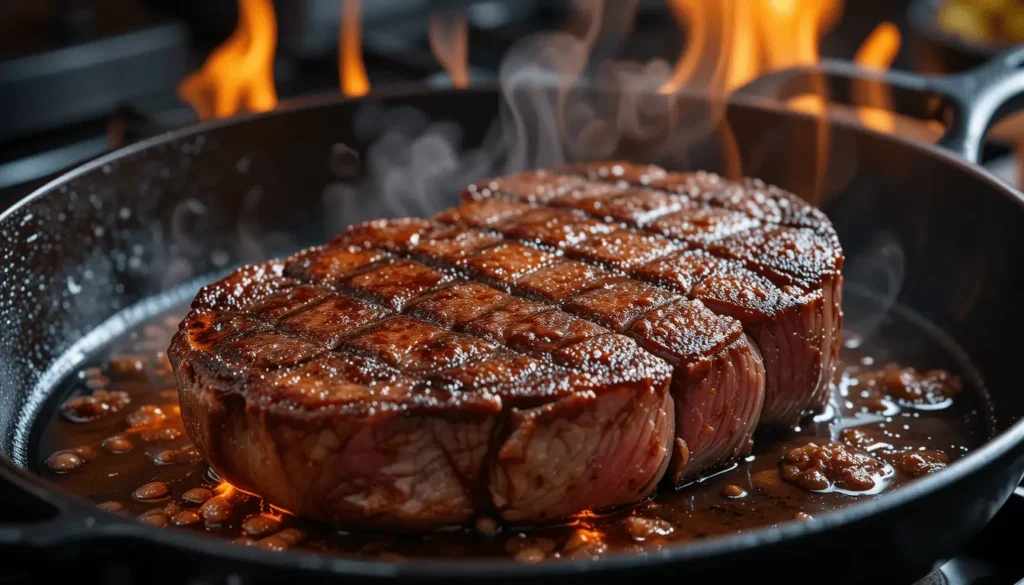
Pairing Beef Loin Flat Iron Steak with Side Dishes
Traditional Side Dishes for Beef Loin Flat Iron Steak
Classic pairings include creamy mashed potatoes, sautéed green beans, and buttery dinner rolls.
Modern Accompaniments to Elevate Your Meal
Consider quinoa salads, roasted sweet potatoes, or zesty chimichurri sauce for a contemporary twist.
Storing Beef Loin Flat Iron Steak
How to Store Beef Loin Flat Iron Steak for Freshness
Proper storage ensures the freshness and quality of your steak. First, check the beef loin flat iron steak label for storage instructions and expiration dates. Keep the steak in its original packaging or wrap it tightly in plastic wrap to prevent air exposure. Store it in the coldest part of the refrigerator, ideally at 32–34°F. If you’re not cooking within a few days, freeze it for longer preservation. Always refer to the beef loin flat iron steak label for optimal handling recommendations.
Freezer Storage and Thawing Guidelines
For long-term preservation, freeze your steak promptly. Wrap it tightly in freezer-safe packaging, ensuring minimal air exposure. Always consult the beef loin flat iron steak label for specific freezing recommendations. Label the package with the date for tracking freshness. When thawing, place the steak in the refrigerator for a slow, even defrost, which retains quality and prevents bacterial growth. Avoid thawing at room temperature. Referring to the beef loin flat iron steak label ensures safe and optimal storage practices.
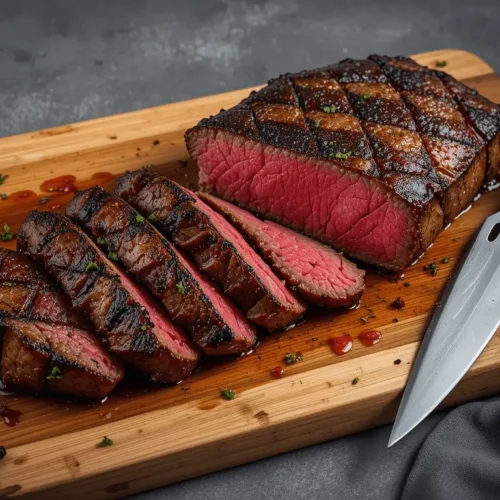
Beef Loin Flat Iron Steak Label
Ingredients
- 1 Beef Loin Flat Iron Steak (about 1 lb)
- 2 tablespoons olive oil
- 1 teaspoon garlic powder
- 1 teaspoon onion powder
- 1 teaspoon smoked paprika
- Salt and pepper, to taste
Instructions
- Step 1: Prepare the steak by patting it dry with paper towels. Rub both sides with olive oil and season with garlic powder, onion powder, paprika, salt, and pepper.
- Step 2: Optional: Marinate the steak in the fridge for 30 minutes to 1 hour for extra flavor.
- Step 3: Preheat your grill or skillet to medium-high heat.
- Step 4: Grill the steak for 4-6 minutes per side for medium-rare, or cook longer for your preferred doneness.
- Step 5: Let the steak rest for 5 minutes before slicing against the grain. Serve with your favorite sides.
Notes
Frequently Asked Questions About Beef Loin Flat Iron Steak Labels
Is Flat Iron Steak a Good Cut of Beef?
Flat iron steak is celebrated as one of the most tender and flavorful cuts of beef. Known for its rich marbling and bold taste, it is a favorite among steak enthusiasts. When assessing quality, the beef loin flat iron steak label provides valuable insights, such as USDA grading and marbling scores, which indicate tenderness and flavor. Its versatility makes it ideal for grilling, pan-searing, or broiling. For a premium yet affordable option, flat iron steak is an exceptional choice.
What is Flat Iron Steak Known As in the Grocery Store?
At the grocery store, flat iron steak may be labeled under various names, often depending on the region or retailer. Look for labels like “top blade steak” or “butler’s steak” in addition to beef loin flat iron steak label. Some stores may simply refer to it as “flat iron” for simplicity. Always check the beef loin flat iron steak label for additional details about the cut, such as USDA grading or specific preparation suggestions, ensuring you select the best option for your needs.
Why is Flat Iron Steak So Expensive?
Flat iron steak is often considered expensive due to its tender texture and rich flavor, qualities derived from its unique cut. It comes from the shoulder area, which requires careful butchering to extract the most desirable portions. The beef loin flat iron steak label often reflects its premium quality, highlighting marbling and USDA grading. Additionally, demand for this cut has risen as consumers seek high-quality, versatile steaks. These factors contribute to its higher price point compared to other beef cuts.
Conclusion
understanding the beef loin flat iron steak label is essential for selecting the perfect cut and ensuring a superior culinary experience. This label provides valuable information about the steak’s grade, marbling, and origin, which significantly impacts both flavor and tenderness. By familiarizing yourself with the details on the label, such as USDA grading and marbling score, you can make more informed choices when purchasing flat iron steak.
The flat iron steak’s popularity can be attributed to its excellent tenderness, flavor, and versatility in cooking methods. When selecting the cut, it’s important to check for quality indicators on the beef loin flat iron steak label and understand the terms associated with it. This knowledge ensures that the steak you purchase is of the highest standard, guaranteeing a delightful meal.
Moreover, proper preparation and cooking methods, as well as storing the steak correctly, will further enhance the eating experience. Whether grilling, pan-searing, or pairing with complementary sides, the beef loin flat iron steak label ensures you’re on the right track to culinary success. By embracing the significance of the label, you elevate the entire dining process and fully enjoy the remarkable qualities of this premium beef cut.

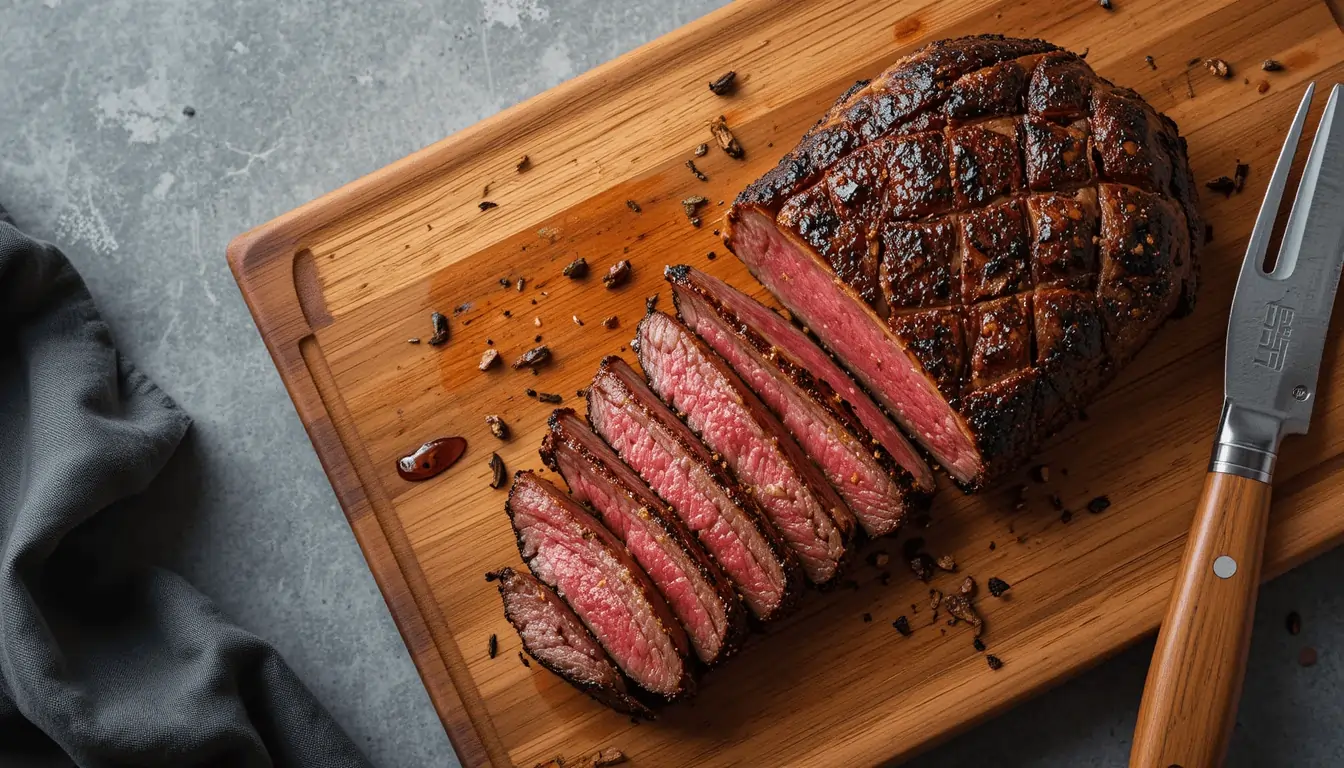
Very delicious easy and quick weeknight meal. Very flavorful. Will make this again!